Top 7 must-see mosaics at Zeugma Mosaic Museum
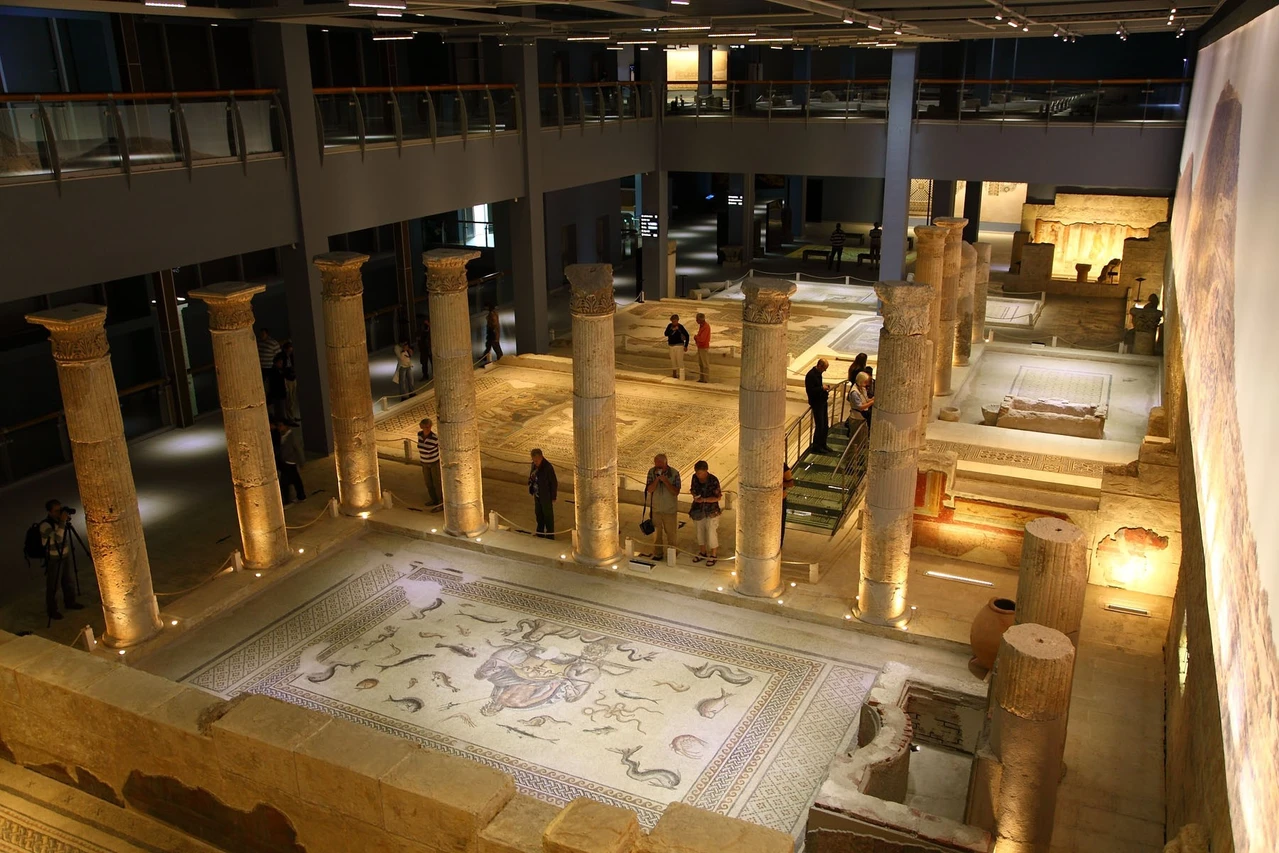 Zeugma Mosaic Museum in Gaziantep, Türkiye, April 18, 2023. (IHA Photo)
Zeugma Mosaic Museum in Gaziantep, Türkiye, April 18, 2023. (IHA Photo)
The Zeugma Mosaic Museum, which showcases some of the world’s most important mosaics, hosts a remarkable collection excavated from the surrounding ancient city of Zeugma.
Let’s explore the history of the ancient city of Zeugma and the unique artifacts that make this museum a treasure trove.
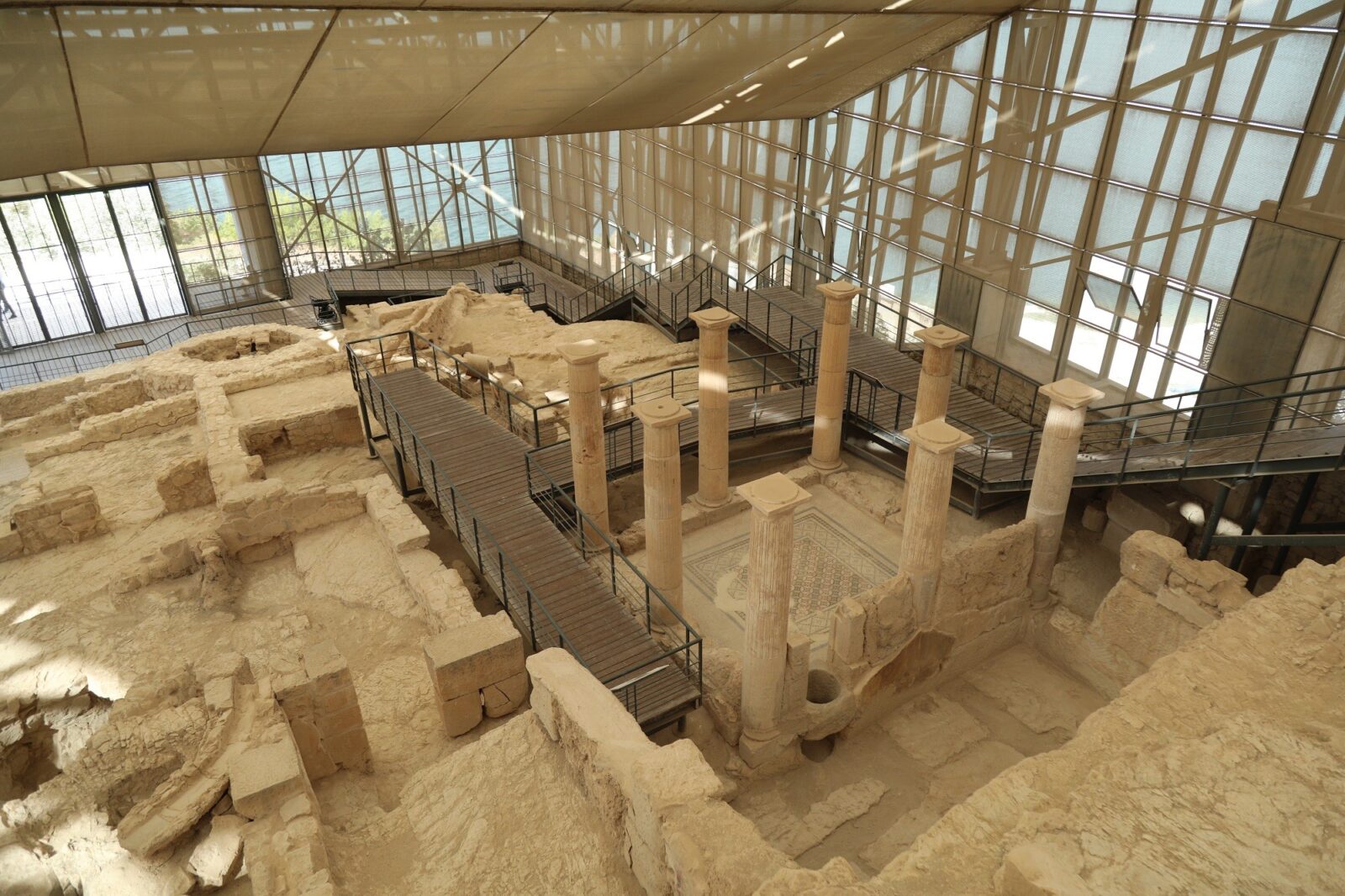
History of ancient city of Zeugma
Founded in 300 B.C. in the village of Belkis, within the Nizip district of Gaziantep, Zeugma spanned an area of about 20,000 hectares. Its strategic position, located at the shallowest crossing of the Euphrates River, made it significant for military and commercial purposes throughout history.
The city was established by Seleucus Nicator, a general of Alexander the Great, who initially named it “Seleucia Euphrates.” During the first century B.C., the Romans annexed the city, renaming it “Zeugma,” meaning “bridge” or “crossing.”
In 252 A.D., Sasanian King Shapur I captured and ravaged the city. It later fell under Roman control until the fifth to sixth centuries, and by the seventh century, it was abandoned due to Islamic conquests. It was later resettled in the 10th-12th centuries with a small Islamic community, and the modern village of Belkıs was established in the 16th century.
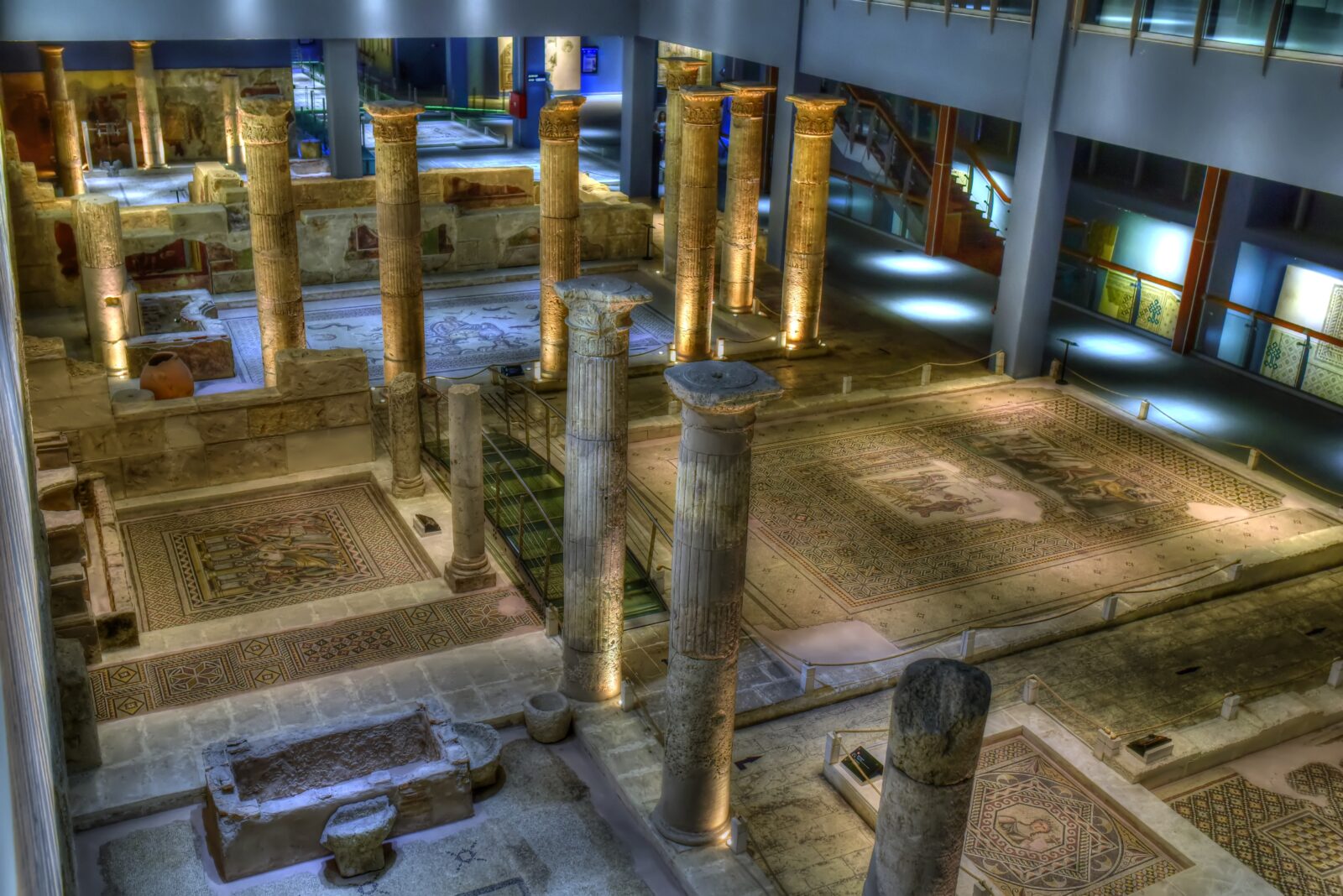
About Zeugma Mosaic Museum
Home to a rich collection of mosaics, the museum features 3,000 square meters of mosaics, 140 square meters of frescoes, Roman fountains, limestone statues, grave steles and sarcophagi. The mosaics, nearly 2,000 years old, are notable for their intricate designs, vibrant colors, and technical mastery.
Covering 25,000 square meters indoors, the museum complex comprises three buildings. The main block houses mosaics from the ancient city of Zeugma, while the second building displays mosaics from ancient churches, and the third block features conference halls and administrative offices.
The museum‘s site, built on the grounds of an old tobacco factory, was officially opened to the public on Sept. 9, 2011. Designed to replicate the architecture of the time, it allows visitors to experience the culture, lifestyle, and beliefs of the people who once lived in Zeugma. It held the title of the world’s largest mosaic museum for nearly three years until it was surpassed by the Hatay Archaeology Museum in 2014.
Highlights of museum collection
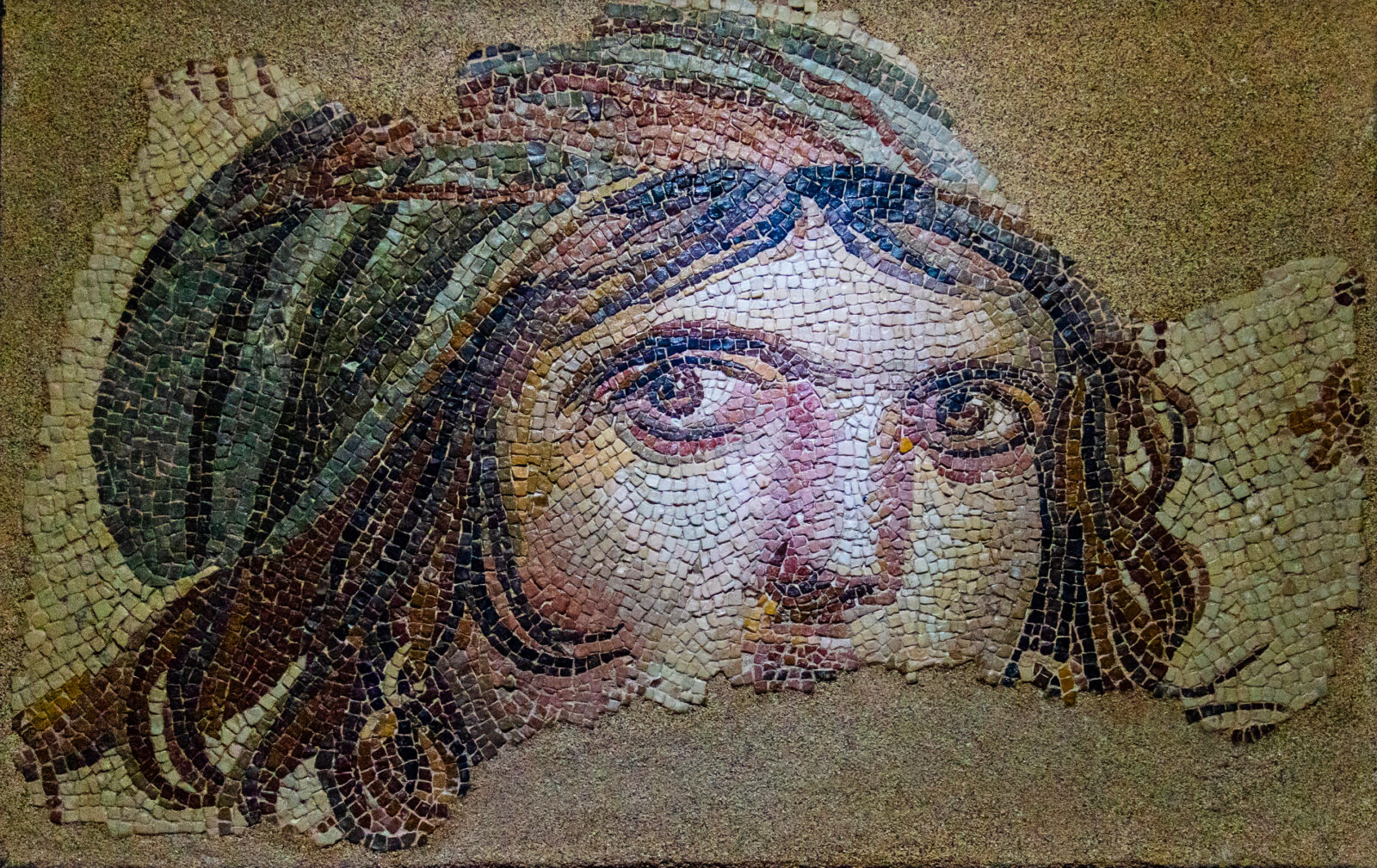
1- ‘Gypsy Girl’
Perhaps the most iconic piece in the museum, the Gypsy Girl, is a mysterious mosaic located in a dark, maze-like room on the second floor. This mosaic, originally the floor of a dining room in the Mainad Villa, depicts a woman with parted hair and a scarf tied around her head. Her expressive, melancholic eyes have earned comparisons to the Mona Lisa. The mosaic’s missing parts were returned to Türkiye from the U.S. in 2018 after negotiations with Bowling Green State University, where they had been displayed for years.
Much like the famous “Gypsy Girl,” this mosaic was one of those smuggled out of the ancient city of Zeugma to the United States during illegal excavations in the 1960s. It was returned to Türkiye in 2012 through efforts by the Ministry of Culture and Tourism.
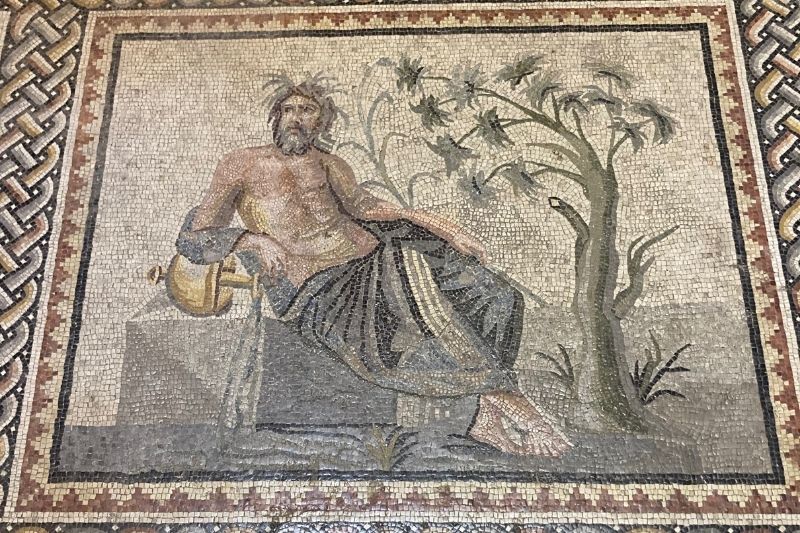
2- Euphrates Mosaic
Unearthed during rescue excavations in 2000, this mosaic portrays the river god Euphrates reclining on a divan, with water flowing from a jar under his arm.
The mosaic, depicting the tragic myth of Euphrates and his son, highlights the mythological roots of the Euphrates River’s name.
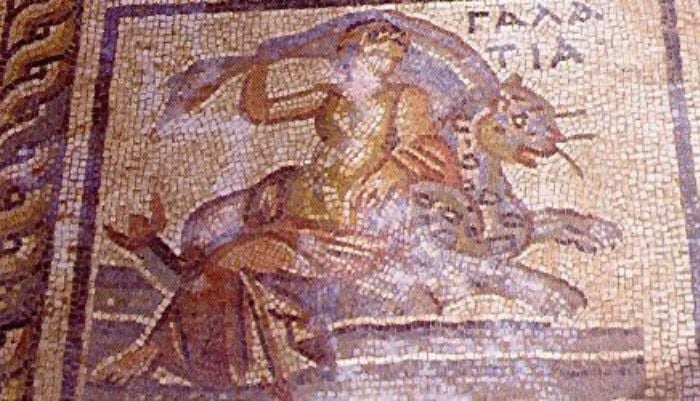
3- Galateia Mosaic
The Galateia mosaic tells the story of Galateia, who disguised her daughter as a boy to avoid abandoning her due to her husband’s preference for a male heir.
This myth underscores themes of transformation and identity, vividly depicted in the mosaic’s design.
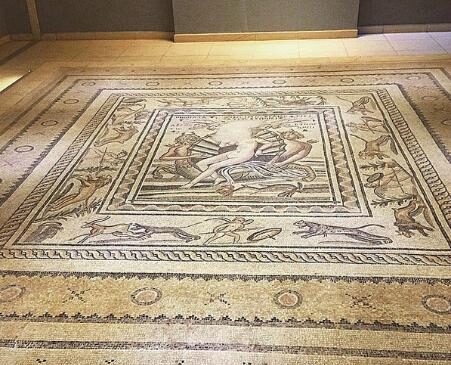
4- Birth of Venus Mosaic
This piece, illustrating the birth of Venus, portrays the goddess emerging from the sea. Recognized as the protector of Rome, Venus is a central figure in Roman mythology.
The mosaic’s stunning detail and artistry make it a highlight of the museum.
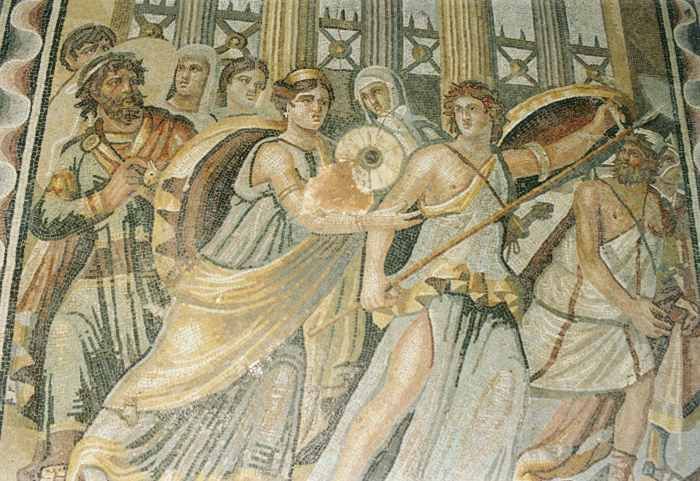
5- Achilles Mosaic
Based on a scene from the epic tale of the Trojan War, this mosaic depicts the moment when Odysseus discovers Achilles, who had been disguised as a woman to avoid being sent to war.
The intricate design captures the dramatic reveal, showcasing the mythological storytelling that mosaics from Zeugma are known for.
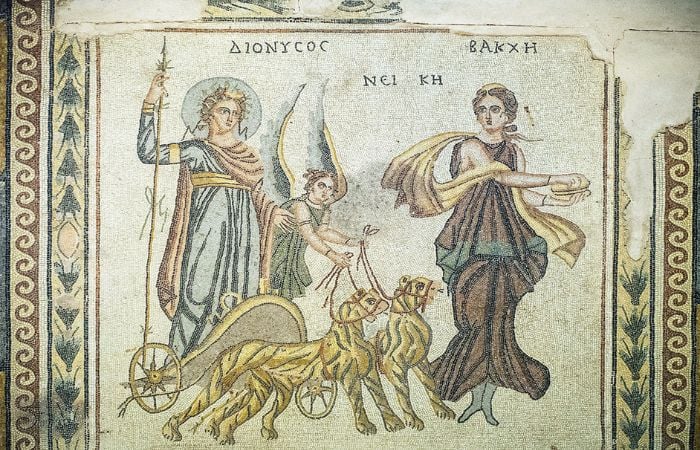
6- Dionysos and Nike Mosaic
The Dionysos and Nike mosaic is one of the significant artworks that depict stories and characters from ancient Greek mythology. Dionysos, the god of revelry, celebrations, ecstasy, and wine, was a deity of Anatolian origin, not originally part of the Greek pantheon.
He was also known as the god of a mystery cult, where followers embarked on mystical journeys by consuming wine.
These ritual-like ceremonies, aimed at transcending oneself and attaining secret knowledge, were performed by men called Satirus and women known as Bakkha. In this mosaic, Dionysos is seen inside a chariot driven by Nike, the goddess of victory, and pulled by two panthers. Ahead of the panthers, a Bakkha is depicted dancing as they move forward.

7- Oceanos and Tethys Mosaic
In ancient times, Oceanos was regarded as the god of the open seas across the world, excluding the Mediterranean, and he lived with Tethys, who symbolized the feminine aspect of the sea. It was believed that all the rivers and streams of the world originated from Oceanos and Tethys.
This mosaic, excavated from Zeugma and thought to have been part of the floor in a pool or dining room, portrays Oceanos and Tethys surrounded by sea creatures. Additionally, Eros figures riding and hunting dolphins are also depicted in the mosaic, adding a lively and dynamic element to the scene.
The Zeugma Mosaic Museum is a testament to the artistic and cultural legacy of the ancient city of Zeugma. Its exquisite mosaics offer a glimpse into the lives, myths, and beliefs of the people who once lived there, preserving history one tiny tile at a time.



